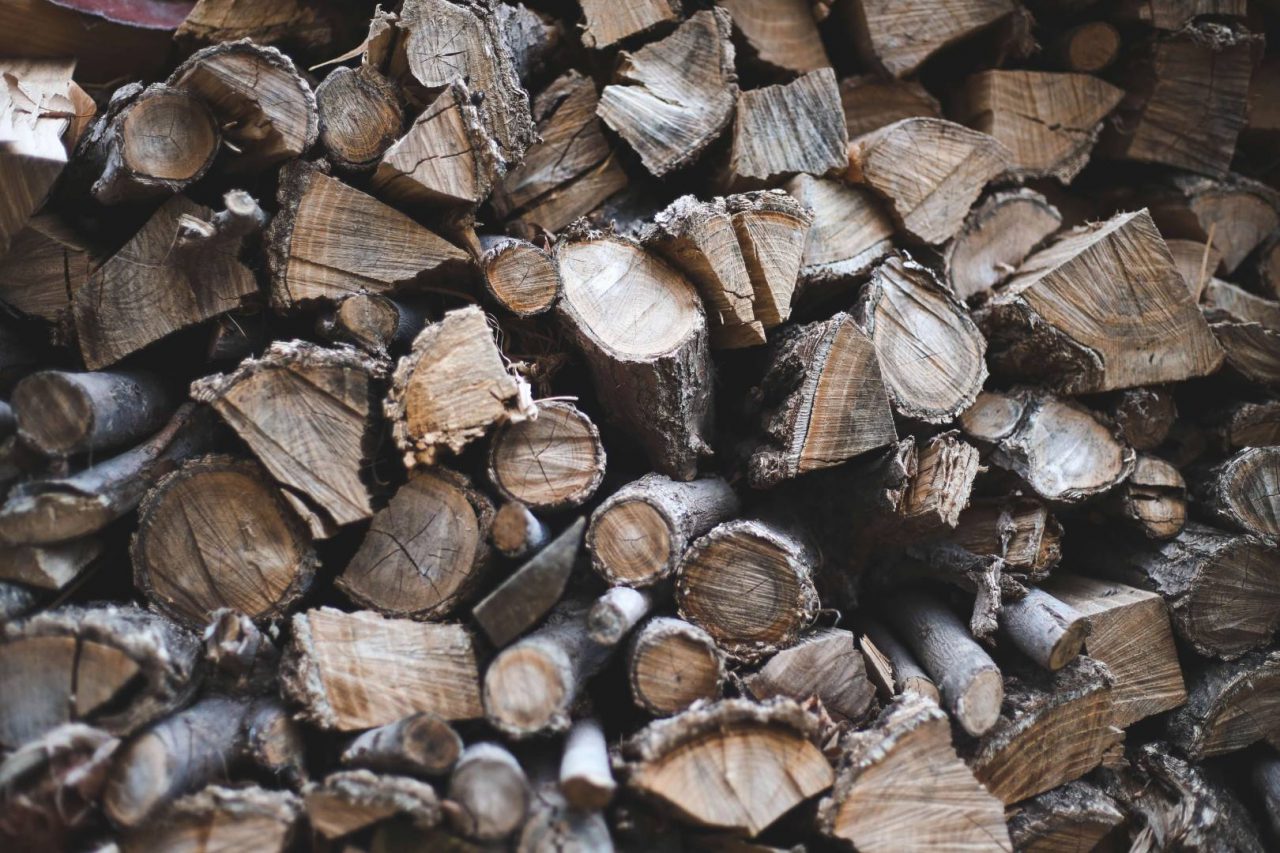
Why Burning Unseasoned Wood in Your Fireplace Increases the Need for Chimney Cleaning Service
We all know the easiest answer to what goes on a fire: firewood. But not all wood is actually safe to use, especially when having a fire indoors.
Wood readiness is categorized as stages of seasoned and unseasoned wood depending on moisture levels. Wood that doesn’t burn, or shouldn’t be burned, has a higher level of moisture. Burning unseasoned wood in a fireplace is not only a more difficult way to produce a consistent flame, but it also can be very damaging to both you and your home.
The material you use to feed your fire is one of the most important components. Lighting a fire is exciting, but burning green wood isn’t something to hastily overlook. For your next fire, think before you throw another log on!
In this blog, we’ll get you caught up on the difference between burning seasoned and unseasoned wood, why it is important to know the difference, and why burning unseasoned wood in your fireplace increases the need for chimney cleaning services.
What is The Difference between Seasoned Wood and Unseasoned Wood?
While some people may be in the dark about what wood is acceptable to burn, knowing the differences between seasoned and unseasoned wood can make a huge, well, difference. Not only will you be able to have a more successful fire, but you’ll also be able to avoid dangerous situations and harm to your chimney.
How To Tell if Wood Is Green
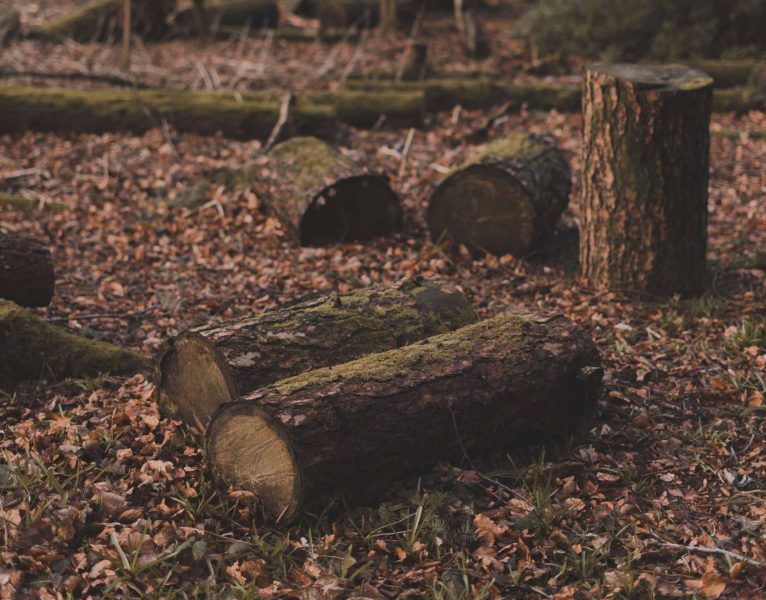 The first clue is right there in the name! “Green wood” simply means it is fresh and has too high of a moisture level to be burned yet. Unseasoned wood is wood that doesn’t burn.
The first clue is right there in the name! “Green wood” simply means it is fresh and has too high of a moisture level to be burned yet. Unseasoned wood is wood that doesn’t burn.
Unseasoned wood pieces typically have a more greenish color to them. This is a visual sign that there are still high levels of moisture remaining in the wood. By having more moisture, this wood is fresher and stronger. It will be difficult to bend or snap and will be in strands when forced to separate (quite honestly, think of bending a cheese stick in half.) You can feel the moisture on the surface or underneath the easy-to-peel bark.
If you missed the green wood before placing it on the fire, there are still tell-tale signs to notice your mistake when burning green wood. Due to the high moisture levels, when burning unseasoned wood in a fireplace you will hear pops and hisses as the extra water evaporates from the fire. From the increased moisture, green wood typically produces thicker smoke.
The final sign of having used unseasoned wood is that your fire is struggling. Unseasoned wood is more difficult to light, and in turn, stays lit. Fire and water are opposites, and with excess water in your burning material, you’ll find unseasoned lumber is wood that doesn’t burn easily.
Be On the Lookout for Seasoned Wood
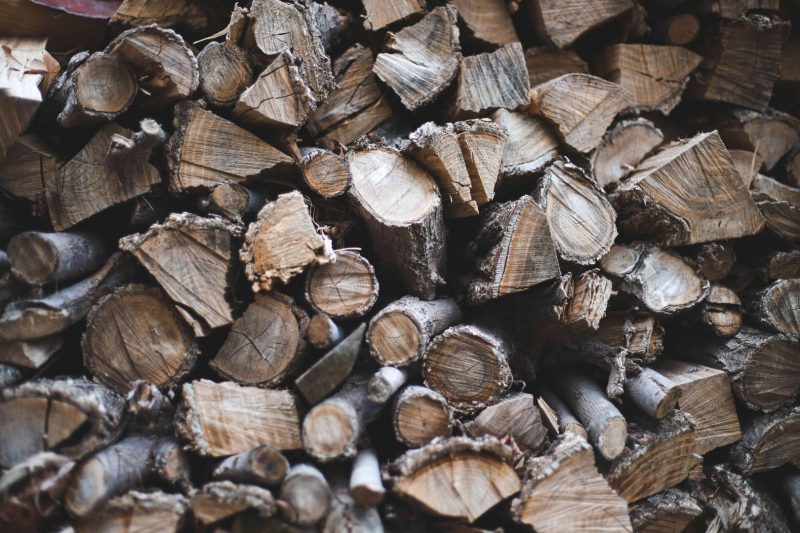 Please, put away the salt and pepper. When wood is properly “seasoned”, it just means that the wood is at an appropriate level of dryness to be used in a fire.
Please, put away the salt and pepper. When wood is properly “seasoned”, it just means that the wood is at an appropriate level of dryness to be used in a fire.
Without the extra water, the wood will also naturally become less dense. When choosing seasoned wood, you can tell seasoned from green pieces as seasoned wood will be lighter weight.
When looking for seasoned wood to use, simply approach the search looking for the opposite characteristics of unseasoned wood. Seasoned wood will be lighter in color with a gray hue, as the color visually represents the dryness without the extra moisture. The bark will peel off easily, and the dry pieces will snap cleanly in half when bent.
Why Is Burning Unseasoned Wood in a Fireplace Dangerous and Harmful?
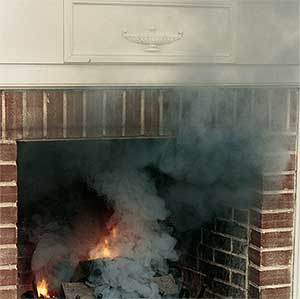 As mentioned before, unseasoned wood has moisture levels remaining inside it. When burning green wood, the chemical process of heating up the wood causes the water molecules to evaporate. While smoke is inevitable, burning green wood produces smoke in excess due to having excess moisture.
As mentioned before, unseasoned wood has moisture levels remaining inside it. When burning green wood, the chemical process of heating up the wood causes the water molecules to evaporate. While smoke is inevitable, burning green wood produces smoke in excess due to having excess moisture.
Within that excess smoke are naturally produced chemicals that flow up your chimney. But an increased amount of smoke can cause four serious chimney issues:
- Back puffing
- Creosote buildup
- Internal chimney fire
- Chimney damage
So when you see wood that doesn’t burn and is producing heavy smoke, take note. Both of these issues can directly result in dangerous health conditions within your home, require costly solutions that may or may not be covered by your insurance, and increase the need for repeated chimney cleaning services.
What is Creosote?
Creosote is a thick, brown, tar-like substance that is deposited on the inside walls of your chimney over time due to rising smoke and soot. If it’s not removed in a timely manner, the creosote can form a second and third layer, making it extremely difficult to clean and remove.
This can lead to a number of issues including chimney damage, chimney repair, as well as chimney fire. Creosote is highly flammable and can be ignited by rising embers. Likewise, when creosote builds up over time, it can produce a horrendous odor that can filter out from your chimney and contaminate the inside of your home. Creosote buildup is a serious concern for chimney owners.
But this problem can be avoided entirely! You can easily minimize creosote buildup with the right firewood, and never have to worry about creosote issues.
Burning green, unseasoned wood isn’t the only improper material to use in your fire. Valley Chimney provides a full list of materials to avoid burning to make sure you keep your home and chimney safe.
How to Season Your Wood and Store It
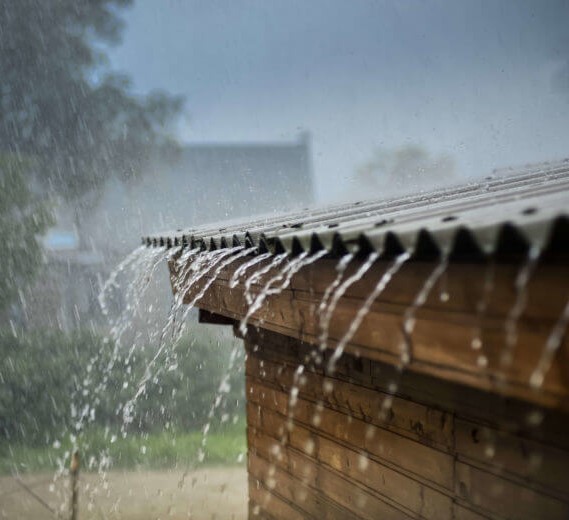 Properly storing your wood is the key to going from unseasoned wood to fire-ready seasoned timber. When getting your winter woodpile together, Valley Chimney recommends following this process:
Properly storing your wood is the key to going from unseasoned wood to fire-ready seasoned timber. When getting your winter woodpile together, Valley Chimney recommends following this process:
- Stack your wood so that it’s open to the weather on one side. This allows heat from the sun and air circulation from the wind to help speed up the drying process as much as possible.
- Keep your firewood stack on either a raised or durable platform. This is an insurance policy against potential water runoff and natural moisture from the ground from getting into the lower layers of wood.
- Stacks need to be in a covered, dry area with an overhang. A perfect example would be an open-door shed that is also deep. This will allow it to have that open side facing the outside air to release moisture particles while still being protected from the snow and rain.
The U.S. Environmental Protection Agency’s Burn Wise program is dedicated to proper firewood safety and use. As we all know, wet wood is wood that doesn’t burn, so the EPA recommends a firewood moisture level between 15% and 20%. Check out the following video below to see the EPA’s best way to stack firewood!
How Long Does Wood Take to Season?
Nature sure likes to take her time, and the same can be said about seasoning your firewood. On average, it takes around 6 months for wood to properly age. But in truth, it can take anywhere from 3-12 months depending on the type of tree that is cut. This is why Valley Chimney recommends doing your research into the trees in your area and suggests beginning your wood pile preparations in early Spring.
Even how you cut your wood can have an impact on the drying time frame of seasoning your firewood. Remember that the smaller the piece, the quicker it will be fully dry. While tiny pieces get burned faster in the fire, larger ones take longer to dry, so somewhere in the middle is the safest standard for size.
If seasoning your firewood seems too long of a process, test out your firewood with a moisture gauge, or check around for your local lumber yard that is selling cords of wood. Whatever you decide, don’t wait too long or it will be a cold winter for you!
Valley Chimney Sweep and Restoration Can Check Your Chimney for Issues from Unseasoned Wood
Didn’t know your firewood needed to be seasoned first? Not sure if the wood you’re burning is right? Let the professionals at Valley Chimney help get you on the right track.
Valley Chimney is a family-owned and operated chimney cleaning and restoration company that has serviced over 40,000 chimneys since our founding in 1978. Our clients are located in Chicago’s western suburbs and receive top-quality services from our team of Certified Chimney Sweeps™. Customer service is our number one priority, and we are proud to inspect, service, and repair our local community’s chimneys!
We offer a wide range of professional chimney services. For over 40 years, our goal has been to make residential chimneys safer to use for you and your family by reducing chimney hazards. Let Valley Chimney be your Chimney Sweep for Life by joining our customer discount program.
While burning unseasoned firewood in your fireplace increases the need for chimney cleanings, we are here to help prevent that and any other fireplace and chimney issues. Contact Valley Chimney today to see how you have the best fire by letting us provide the best chimney cleaning services!



